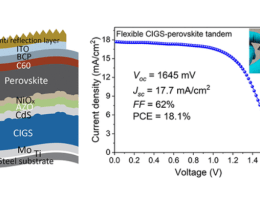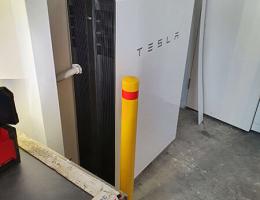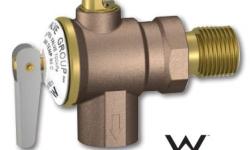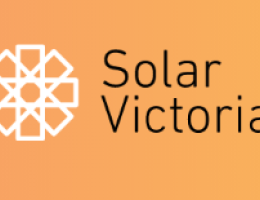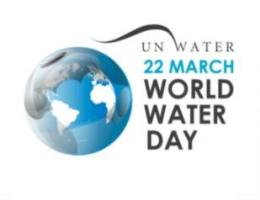
The ACT has just reached its target of 100 per cent (net) renewable electricity, to become only the eighth region in the world to achieve this milestone, according to a recent Australia Institute report.
While the achievement is great news, there is still a long way to go before the territory can declare that it does not depend on fossil-fueled power itself. It is about 20% of the way to making that claim (see the five stages of renewable energy transition below).
The ACT target will be met thanks to its recent purchase of renewable electricity generation from Stage 3 of the Hornsdale Wind Farm.
That power generation project is in the south-west of the Narien Range in South Australia, thousands of kilometres from the Australian capital.
In fact, the vast majority of the target is made up of energy generated well outside the ACT, mostly procured through reverse auctions of utility-scale wind and solar.
By contrast, the seven jurisdictions above the ACT on the 100 per cent renewables ladder produce most of their clean energy within their borders.
Jurisdictions that had historically relied on hydro and geothermal energy were not included in the report, which sought to capture regions that had purposefully set out to transition away from fossil fuels.
Additionally, only regions with a population greater than 100,000 were included in the report.
Germany’s Rhein-Hunsrück leads the league with concerted efforts from 1999 to become energy independent; in order to save €290 million (AUD470 million) on imported energy. It has a lofty aim of producing enough clean electricity to create a substantial export commodity.
“There are ambitious plans to increase clean energy exports from the district, with a general target of 828 per cent of demand by 2050,” the institute said.
The district’s sources include rooftop solar PV, wind and biomass, and it has a huge focus on energy efficiency.
Surplus power above local demand is: converted and stored as “green” methane, used for heat pumps, powers electric vehicles and is exported.
Further north in Germany, the state of Mecklenburg-Vorpommern, whose population is about 1.6 million, produced 120 per cent of its electricity needs in 2013. A coastal region, it harnesses 4000GWh of wind energy, as well as power from solar and biomass.
The northern-most German state, Schleswig-Holstein, is relying on wind, solar and biomass energy to reach its target of 300 per cent renewable power by 2025.
About 16,000 of the 2.9 million people in this region work in the clean energy sector.
Extremadura in south-west Spain first met its 100 per cent renewables target in 2010 through wind and hydro power. It now leads the world in solar thermal technology, which includes the use of various storage technologies.
Burgenland in Austria has a longstanding strategy to develop a clean energy economy through the manufacture of solar PV and integrating agriculture with energy production.
It also happens to have one of the windiest regions in Central Europe in which its wind farms produce 45 per cent of the country’s generation capacity.
Back in the ACT, the 100 per cent target is being met through new, large-scale renewable energy projects around Australia, $500 million of which have been developed within the territory.
Some 25 per cent of the target is met through measures including the national Renewable Energy Target, the ACT’s legislated small and medium-scale Feed-in Tariff schemes and solar support provided by retailers, according to the institute.
As a leader in the field, there is no doubt the ACT is miles ahead of other Australian regions.
But it still has a ways to go before it becomes a genuine renewable energy powerhouse.
The way things are shaping up in the renewable energy revolution, regions are going through five stages to renewable energy greatness and they are as follows:
-
Stage one: 100% net renewable electricity.
At this stage a region buys in or produces 100% of its electricity from renewable sources.
-
Stage two: 100% net renewable electricity within borders
As the name suggests at this stage a region produces 100% net renewable electricity from within its borders i.e. imports of non-renewable electricity are matched by exports of renewable electricity.
-
Stage three: 100% net renewable energy
A big leap! At this stage not just electricity but primary energy (which is about 3 - 4 times the energy from electricity) is either bought in or produced within territorial borders. This stage occurs when there is a widespread effort to electrify end-use services and/or produce large amounts of bio-energy.
-
Stage four: 100% net renewable energy sourced within borders
At stage four a region is producing 100% of its energy needs within its borders but does require some imports as supply does not always match instantaneous demand (but does on an annual basis).
-
Stage five: Energy independence 100% + renewable energy sourced within borders.
At this stage a region is truly energy independent in the fullest sense of the word, it is a net contributor of energy and the renewable energy revolution is essentially complete. This stage will only be met once most end-use services are all electric such as heating and transport and storage technologies are widely deployed. The existing grid interconnections are used for exports and to add additional security of supply.
The ACT should be lauded for its clean energy actions so far, but its renewable energy revolution as a long way to run yet. The ACT has the renewable resources and the know how to reach stage 5, true energy independence, so its current achievements should not blind people to the longer journey that it needs to make. The territory is a leader in Australia, however, it is a laggard on the international stage where best-practice in renewable energy independence is miles ahead.

